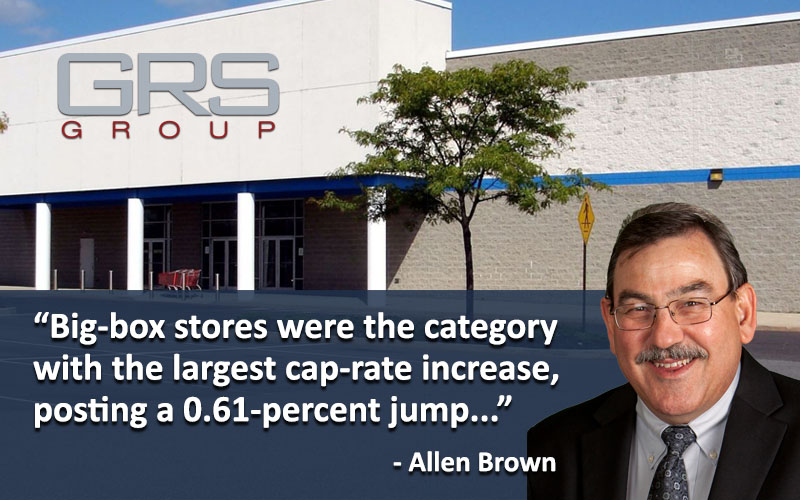Allen Brown is a director at GRS | Title. He can be reached at (480) 428-5575 or via email at abrown@fv2.d32.myftpupload.com
Sellers in the net lease sector of commercial real estate had the upper hand over buyers during the first quarter, as capitalization rates inched up, according to a recent Boulder Group report.
The cap-rate increase comes as net-lease deals were on the rise last year. There was $62 billion in transactions last year, a nine-percent increase from 2017, said Boulder, citing CoStar Group research data.
Cap rates for office rose eight basis points from the fourth quarter of 2017, to 7.1 percent, while retail saw a two-basis-point increase, to 6.27 percent. Industrial actually dropped by seven basis points, falling to seven percent. A survey taken during the first quarter by Boulder Group showed that 39 percent of investors think cap rates for the entire year will remain the same as 2018, while only five percent had the same sentiment when polled in the fourth quarter.
As of the end of the first quarter, Boulder Group counted 4,358 net-lease retail assets on the market, down 8.55 percent from the fourth quarter. The 479 office properties available represent a 1.59-percent increase, while the 352 industrial properties were 2.52 percent less.
The biggest net-lease transaction of the quarter was in the office sector, when an office building leased to the Department of Education, in Washington, D.C., traded hands for just under $166.6 million, or $471 per square foot, at a cap rate of 6.35 percent.
Meanwhile, a report released by Calkain at the beginning of the year broke down cap rates by tenant use. It found that over 2018, the two uses to see declines in rates were dollar stores, falling 0.02 percent, and quick-service restaurants (QSR), down 0.08 percent. Big-box stores were the category with the largest cap-rate increase, posting a 0.61-percent jump.
In the dollar-store category, Dollar General had the lowest cap rates in 2018, at 6.95 percent, which was unchanged from the prior year. Starbucks was the lowest in the QSR sector, at 4.95 percent, which was down from 5.04 percent in 2017. The strong overall QSR performance is attributed to the continuing amount of money that households are willing to devote to meals spent at restaurants.
On the other end of the spectrum, Kohl’s had the highest big-box average cap rate, at 9.36 percent, which was a significant increase from 6.26 percent in 2017.
We’ll see over the rest of the year if cap rates continue to rise across sectors or if changes in the overall economy cause compression.

